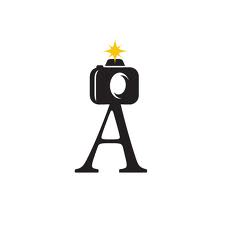Digital Photography brings new and exciting features to our lives. It also comes with its own learning process. If you are asking yourself what the heck is pixel count? How much memory do you need for purchasing a quality camera? What is the difference between memory choices? Don't worry you are not alone. Digital Camera Terms comes handy when learning to use your new DLSR. Even prior to purchase a digital camera consumers pays attention to a list such as this:
1 How many Megapixel
2 Memory Cards
3 Lens/ digital zoom
4 File formats that are supported
5 Shutter Lag/Lag Time
6 Computer Connectivity
7 Flash
8 Power
Below you will find many of these common terms and their definition.
Pixel (Picture Element)
Digital images are made up of millions of small squares. One square is equivalent of a pixel. The more pixels a camera means the image quality will be better.
Megapixel
One major factor in choosing a digital camera is their "megapixel" count. Megapixel simply means "million picture elements", or dots that make up the image. A megapixel is useful in deciding which print size /which screen resolution you will use images for.
Megabyte - (MB)
Measures 1024 Kilobytes, and refers to the amount of information in a file, or how much information can be contained on a Memory Card, Hard Drive or Disk.
LCD (Liquid-Crystal Display) is a mini monitor screen for viewing images.
Viewfinder is the optical "window" to look through for capturing images.
Resolution - Camera resolution describes the number of pixels used to create the image, which determines the amount of detail a camera can capture.
Lag Time - the pause between the time the shutter button is pressed and when the camera actually captures the image.
Storage Card -also known as digital camera MEMORY card is a removable storage device which holds images taken with the camera. There is increasing number of memory card formats available. Basic ones are built-in or a removable memory. Widely used ones are removable ones and frankly they all come with same functionality.
Shutter speed determines the paste of any motion of the image.
F-Stop(or Aperture) determines how narrow or how large is the lens opening should be to let the required light to be allowed into the camera.
Exposures Mode is to set the f-stop and shutter speed for getting the right exposure. Basic Modes and Creative Modes are 2 main exposure modes.
Automatic Mode - A setting that sets the focus, exposure and white-balance automatically.
Burst Mode / Continuous Capture Mode - a series of pictures taken one after another at quickly timed intervals with one press of the shutter button.
Lens - A circular and transparent glass or plastic piece that has the function of collecting light and focusing it on the sensor to capture the image. Various lenses are: regular or "normal" lens (35 mm), wide angle (28 mm), and zoom and telephoto lenses are used to enlarge pictures.
Digital zoom simply crops the image to a smaller size, and then enlarges the cropped portion to fill the frame.
Optical zoom works just like a digital zoom. The lens changes focal length and increase magnification as it is zoomed.
File Formats: JPEG, TIFF, RAW
JPEG - the predominant format used for image compression in digital cameras, TIFF and RAW are non-compressed image files.
White Balance - White balancing adjusts the camera to compensate for the type of light (daylight, fluorescent, incandescent, etc)
Compression - the process of compacting digital data, images and text by deleting selected information.
RGB - Refers to Red, Green, Blue colors used on computers to create all other colors.
Bitmap - is the black and white image without gray tones.
CMYK image consists of cayenne, magenta, yellow and black.
Find more ideas and great tips about Digital Photography DigitalPhotoWorks Website
Article Source: http://EzineArticles.com/?expert=Zoe_Shaw

Aucun commentaire:
Enregistrer un commentaire